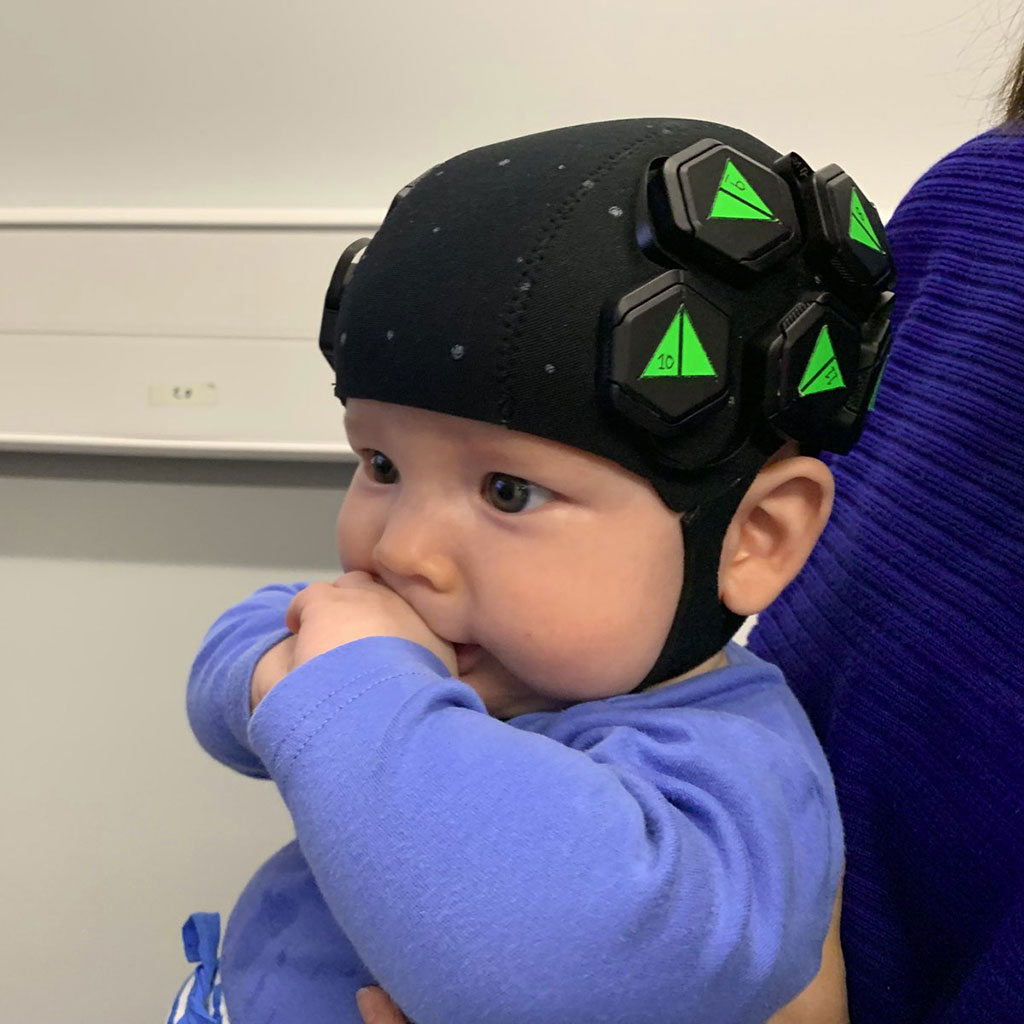Wearable Neuroimaging Cap Maps the Pediatric Brain
By MedImaging International staff writers
Posted on 01 Dec 2020
Brain mapping technology based on optical tomography can help understand how conditions such as autism and cerebral palsy develop in babies, suggests a new study.Posted on 01 Dec 2020
Developed by researchers at University College London (UCL, United Kingdom), the University of Cambridge (United Kingdom), and other institutions, the high-density diffuse optical tomography (HD-DOT) cap uses hundreds of light emitting diodes (LEDs) and optical detectors arranged in a dense network over the scalp to map changes in oxygenation in the brain, creating high-quality, three-dimensional (3D) images of brain activity without the need for a magnetic resonance imaging ( MRI) scanner.

Image: A baby wearing the HD-DOT imaging cap (Photo courtesy of UCL)
Using a well-established social stimulus paradigm, the researchers showed it is possible to obtain high-quality, functional images of the infant brain using HD-DOT, with minimal environmental constraints. The results were consistent with low-density functional near-infrared spectroscopy (fNIRS) measures, but showed superior spatial localization, improved depth specificity, higher signal to noise ratio (SNR) and a dramatic improvement in the consistency of the responses across participants. The study was published on October 24, 2020, in NeuroImage.
“The approach we have demonstrated is safe, silent, and wearable, and can produce images of brain function with better spatial resolution than any other comparable technology,” said lead author Elisabetta Maria Frijia, PhD, of the UCL department of Medical Physics and Biomedical Engineering. “Our hope is that this new generation of technologies will allow researchers from a whole range of fields to learn more about how the healthy infant brain develops and establish new ways of diagnosing, monitoring and ultimately treating neurological conditions like autism and cerebral palsy.”
“There is a lot we still don't know about how the brain develops, and a big part of the problem is that studying the infant brain is really difficult with traditional scanners. As any parent knows, 6-month old babies are very active; they move around all the time and are easily distracted,” said senior author Rob Cooper, PhD, also of the UCL department of Medical Physics and Biomedical Engineering. “Using a technique like MRI, the subject has to remain completely still, which is almost impossible with babies unless they are asleep or sedated.”
HD-DOT exploits flexible electronics to produce ultra-low profile, lightweight sensors that can be directly interconnected to form imaging arrays. By combining various modules together via an in-built board-to-board connector, the system can be used to create a wide range of ultra-lightweight, flexible imaging arrays that incorporate hundreds of emitters and detectors of NIR light to safely image the whole cortex of infant brain.
Related Links:
University College London
University of Cambridge














